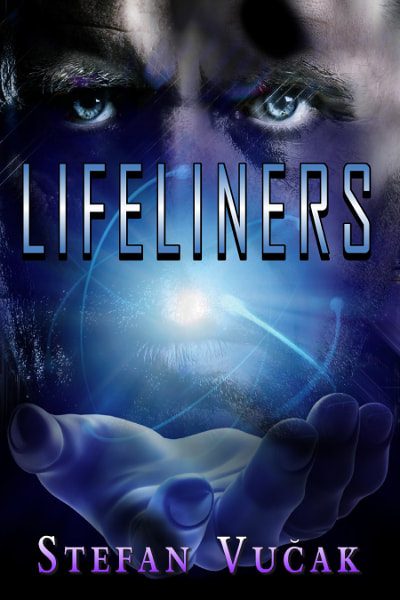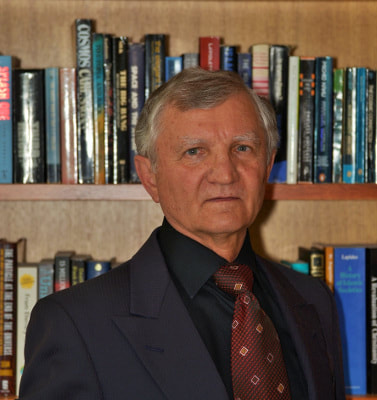Lifeliners
by
Stefan Vucak
Genre:
Science Fiction
When
everybody is against them, it is tough being a lifeliner, as Nash
Bannon found out. Lifeliners are ordinary people...almost. They can
draw energy from another person; they live longer and are smarter.
Scientists claim that Western high-pressure living and growing
sterility in developed countries has triggered the rise of
lifeliners, and homo sapiens will replaced by homo renata within ten
generations. So, what’s not to like about lifeliners? Protest
marches by extremist groups, riots, attacks against lifeliners,
repressive laws enacted by governments everywhere, were portents of a
dark future. Young, successful, Nash Bannon did not like what was
going on, but he thought he had the world at his feet and life in
Australia was good, provided no one found out he was a lifeliner. A
chance encounter with Cariana during a lunchbreak develops into
something he considered important. The Australian government calls a
snap election, and Nash stands as a Senate candidate on the Lifeliner
Party ticket. Unless lifeliners rise up and fight for their rights,
they can expect sterilization, incarceration, and possible
extermination as democracies everywhere turn into autocracies. To
survive, the Lifeliner Party must employ the same dirty tricks the
government used against them, but they were not prepared for what
awaited them.
Stefan
Vucak has written eight Shadow Gods Saga sci-fi novels and six
contemporary thrillers. He started writing science fiction while
still in college, but didn't get published until 2001. His Cry of
Eagles won the coveted Readers' Favorite silver medal award, and his
All the Evils was the prestigious Eric Hoffer contest finalist and
Readers' Favorite silver medal winner. Strike for Honor won the gold
medal.
Stefan
leveraged a successful career in the Information Technology industry,
which took him to the Middle East working on cellphone systems. He
applied his IT discipline to create realistic storylines for his
books. Writing has been a road of discovery, helping him broaden his
horizons. He also spends time as an editor and book reviewer. Stefan
lives in Melbourne, Australia.
GUEST POST

From Chaos to Order

From Chaos to Order
The second law of
thermodynamics has been expressed in many ways, but it basically
means that every ordered system will break down into a disordered
state in a process called entropy. This principle is credited
to the French scientist Sadi Carnot, who in 1824 showed that there is
an upper limit to the efficiency of conversion of heat to work in an
engine. This principle eventually led to the concept of the
asymmetric arrow of time, which states that once an event has taken
place, it cannot be reversed. Generally, we observe entropy at work
every day. A spilled cup of coffee cannot be made to refill, and you
cannot put back a broken egg.
However, if the second law
of thermodynamics was valid in all conditions, the universe as we
know it could not exist. Cosmologists have difficulty explaining the
behavior of the observable universe and the working of entropy. Many
of them ignore the problem by saying that galaxies and stars have
evolved from a low state of entropy, which means a more ordered
state, and that contradicts what we see. An image of the cosmic
background radiation that represents low energy photons that have
decayed from the Big Bang is a random assembly of energies, which
confirms that the Big Bang was a highly disordered system, a soup of
energetic photons. The early universe was in a state of maximum
entropy. It could not become more disordered.
But as the universe
expanded and cooled, this chaotic system gradually became more
ordered, giving rise to fundamental forces, quarks, protons, neutron,
and electrons, which coalesced into elements, molecules, and dust
that coalesced into stars and galaxies, all highly ordered systems.
Granted, once these organized systems formed, they became subject to
entropy. Cosmologists and theoretical physicist talk learnedly about
the second law of thermodynamic and the arrow of time, but they have
failed to explain the tendency of chaotic systems to become ordered.
Gradually,
some understanding of this process is beginning to emerge from the
theory of chaos, first advocated by Edward Lorenz in 1961. In
common usage, ‘chaos’ means ‘a state of disorder’, which
neatly explains the early universe. Such systems are extremely
sensitive to minute influence in initial conditions, and in the early
universe, gravitational fluctuations and variations in matter and
energy, set the parameters that gave rise to more ordered states, or
levels of low entropy, in apparent violation of the second law of
thermodynamics.
Will this apparent contradiction be
eventually resolved? Probably, but it will take the unification of
quantum mechanics and the general theory of relativity that deals
with gravity.
Follow
the tour HERE
for exclusive excerpts, guest posts and a giveaway!








No comments:
Post a Comment